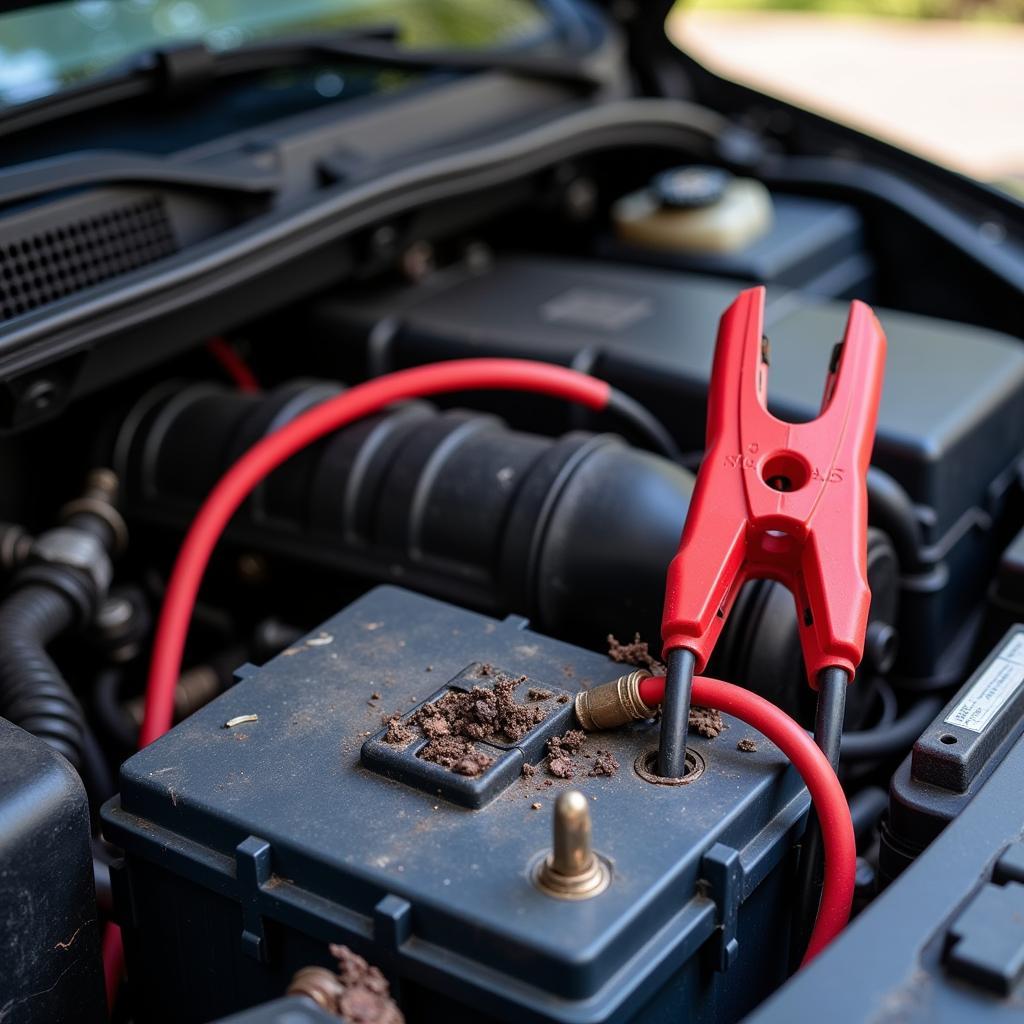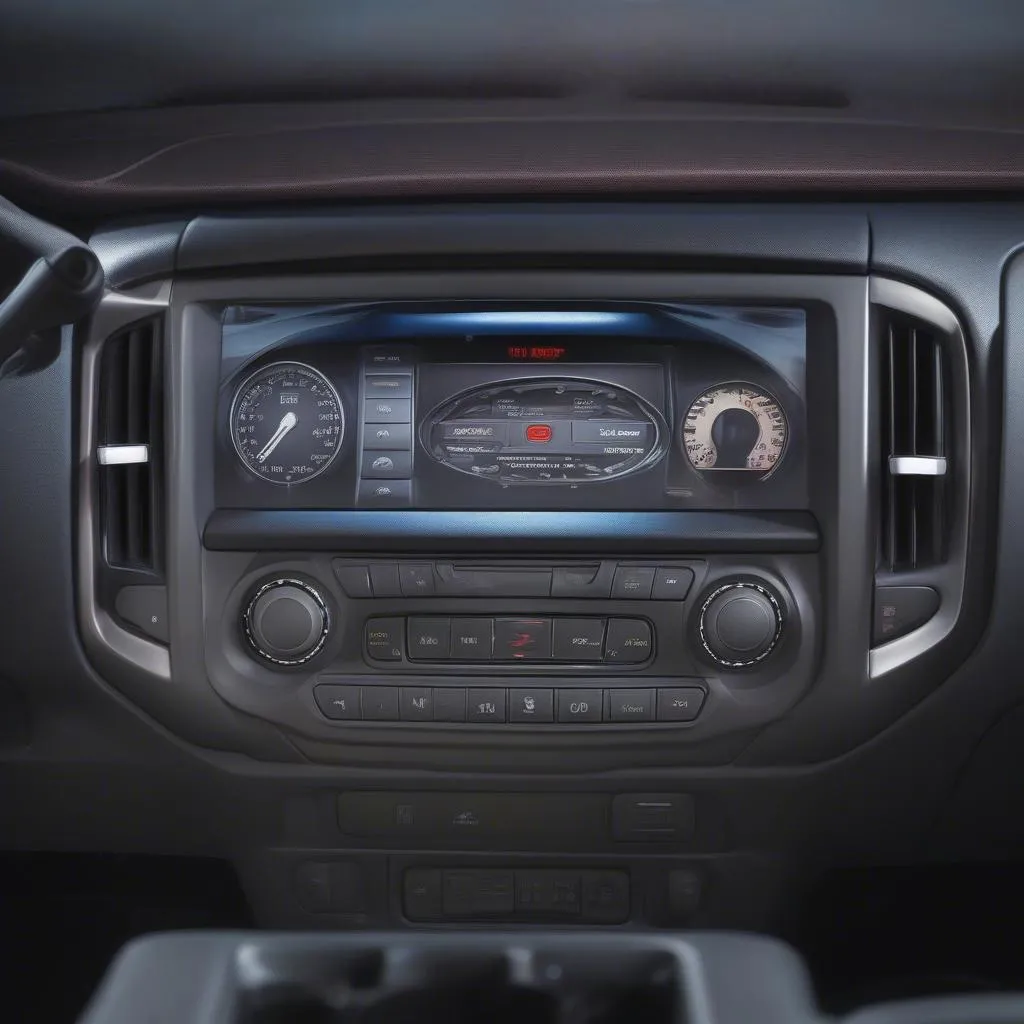Your car won’t jump start? It’s a frustrating situation, but don’t panic. This guide will walk you through the common reasons why your car refuses to jump start and provide expert diagnostic and remote software solutions to get you back on the road.
Understanding Why Your Car Won’t Jump Start
There are several reasons why a car might refuse to jump start. It’s not always a simple dead battery. Everything from corroded terminals to a faulty alternator or even a deeper electrical issue can be the culprit. Before you call for a tow truck, let’s explore some of the most common causes and how to identify them.
Common Culprits: Dead Battery, Bad Connections, and More
The most obvious suspect when a car won’t jump start is a dead battery. However, bad connections at the battery terminals, a failing alternator, or even a parasitic drain can also prevent a successful jump start.
- Dead Battery: A completely discharged battery won’t accept a charge from another car. Signs of a dead battery include dimming headlights, slow cranking, and clicking sounds when you turn the key.
- Bad Connections: Corroded or loose battery terminals can impede the flow of electricity. Check for a white, powdery substance around the terminals.
- Faulty Alternator: The alternator recharges the battery while the engine is running. A faulty alternator won’t charge the battery, making jump-starting a temporary fix.
- Parasitic Drain: Even when the car is off, certain electrical components might continue to draw power, slowly draining the battery. This can be caused by a faulty relay, switch, or wiring.
- Starter Issues: A malfunctioning starter motor might be the reason your car won’t crank, even with a jump. You’ll typically hear a clicking sound when trying to start.
 Dead Car Battery Preventing Jump Start
Dead Car Battery Preventing Jump Start
Diagnosing the Problem: A Step-by-Step Approach
- Check the Battery Terminals: Inspect the battery terminals for corrosion. Clean them with a wire brush and baking soda solution if necessary. Ensure the terminals are tightly connected.
- Attempt a Jump Start: If the terminals are clean and tight, try jump-starting the car again. Make sure the jumper cables are correctly connected (positive to positive, negative to a ground point on the dead car).
- Test the Alternator: If the car starts but stalls after removing the jumper cables, the alternator might be faulty. Have it tested by a mechanic or use a multimeter to check its output.
- Look for Parasitic Drains: If the battery keeps dying, suspect a parasitic drain. Use a multimeter to measure the current draw with the car off.
Remote Diagnostic and Programming Solutions
Modern vehicles rely heavily on software. Remote diagnostic tools and software programming can identify and resolve many jump start-related issues.
- Remote Diagnostics: Specialized software can pinpoint the root cause of the problem by analyzing data from the car’s onboard computer. This can save time and money by avoiding unnecessary repairs.
- Software Updates and Programming: Software updates and reprogramming can resolve issues with the car’s electrical systems, including those that affect the charging system and starting.
 Remote Car Diagnostics Software for Jump Start Issues
Remote Car Diagnostics Software for Jump Start Issues
What if the problem persists after cleaning the terminals?
If your car still won’t jump start after cleaning the terminals, it indicates a more serious issue beyond a simple connection problem. This could be a faulty battery, alternator, or starter. Further diagnosis is required.
Can I jump start a car with a completely dead battery?
While you can attempt to jump start a car with a completely dead battery, it might not always be successful. A deeply discharged battery might not be able to hold a charge, even with a jump.
“Remote diagnostics and software updates are becoming increasingly crucial in resolving complex car issues, including jump start problems,” says John Smith, Automotive Electrical Engineer at Advanced Auto Solutions. “These technologies allow for precise identification and efficient solutions, often without requiring physical access to the vehicle.”
Preventing Future Jump Start Issues
- Regular Battery Maintenance: Check your battery regularly for corrosion and ensure the terminals are clean and tight.
- Limit Short Trips: Short trips don’t allow enough time for the alternator to fully recharge the battery.
- Turn Off Accessories When Not in Use: Lights, radio, and other accessories can drain the battery when the engine is off.
Conclusion
A car that won’t jump start can be a major inconvenience. By understanding the common causes, following a systematic diagnostic approach, and leveraging remote diagnostic and software solutions, you can effectively address the problem and get back on the road. Regular battery maintenance can help prevent future jump start issues. Remember, if you’re unsure about any step, it’s always best to consult a qualified mechanic.
FAQ
- How long should I let a car run after jump-starting it? Ideally, let the car run for at least 30 minutes to allow the alternator to recharge the battery.
- Can a bad starter prevent a car from jump-starting? Yes, a faulty starter can prevent the engine from cranking even with a jump.
- Is it safe to jump start a modern car? Yes, it’s generally safe, but always follow the correct procedures outlined in your car’s owner’s manual.
- How often should I replace my car battery? Car batteries typically last 3-5 years, but it’s best to test them regularly.
- What are the signs of a bad alternator? Signs of a bad alternator include dimming headlights, flickering dashboard lights, and a whining sound from the engine.
- Can extreme temperatures affect a car battery? Yes, both extreme heat and cold can shorten the lifespan of a car battery.
- What should I do if my car won’t start after multiple jump start attempts? If your car still won’t start after multiple attempts, it’s time to call a qualified mechanic or towing service. “Investing in preventative maintenance, like regular battery checks and timely software updates, can significantly reduce the likelihood of encountering jump start issues in the future,” adds Maria Garcia, Senior Technician at AutoTech Solutions.


